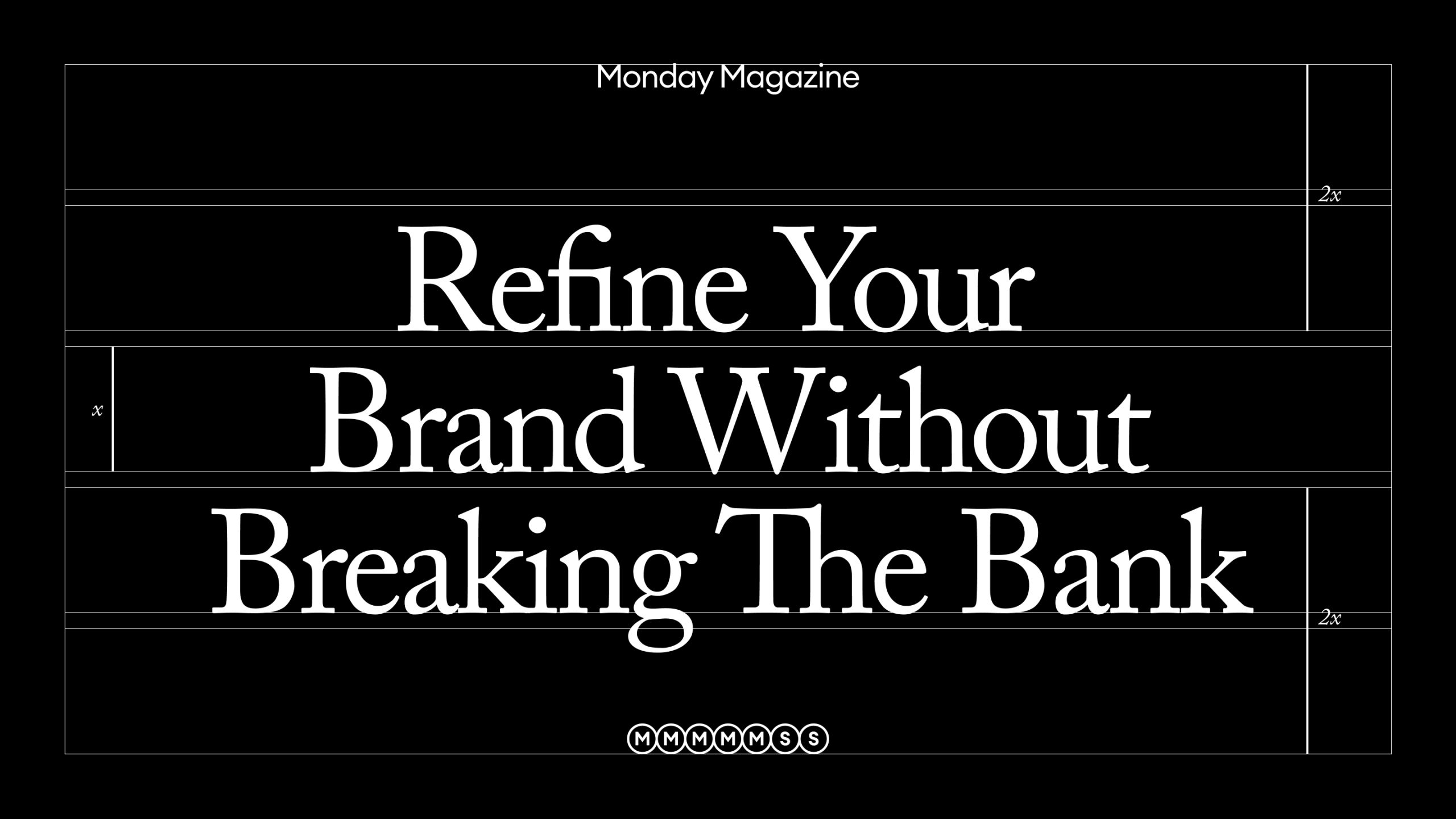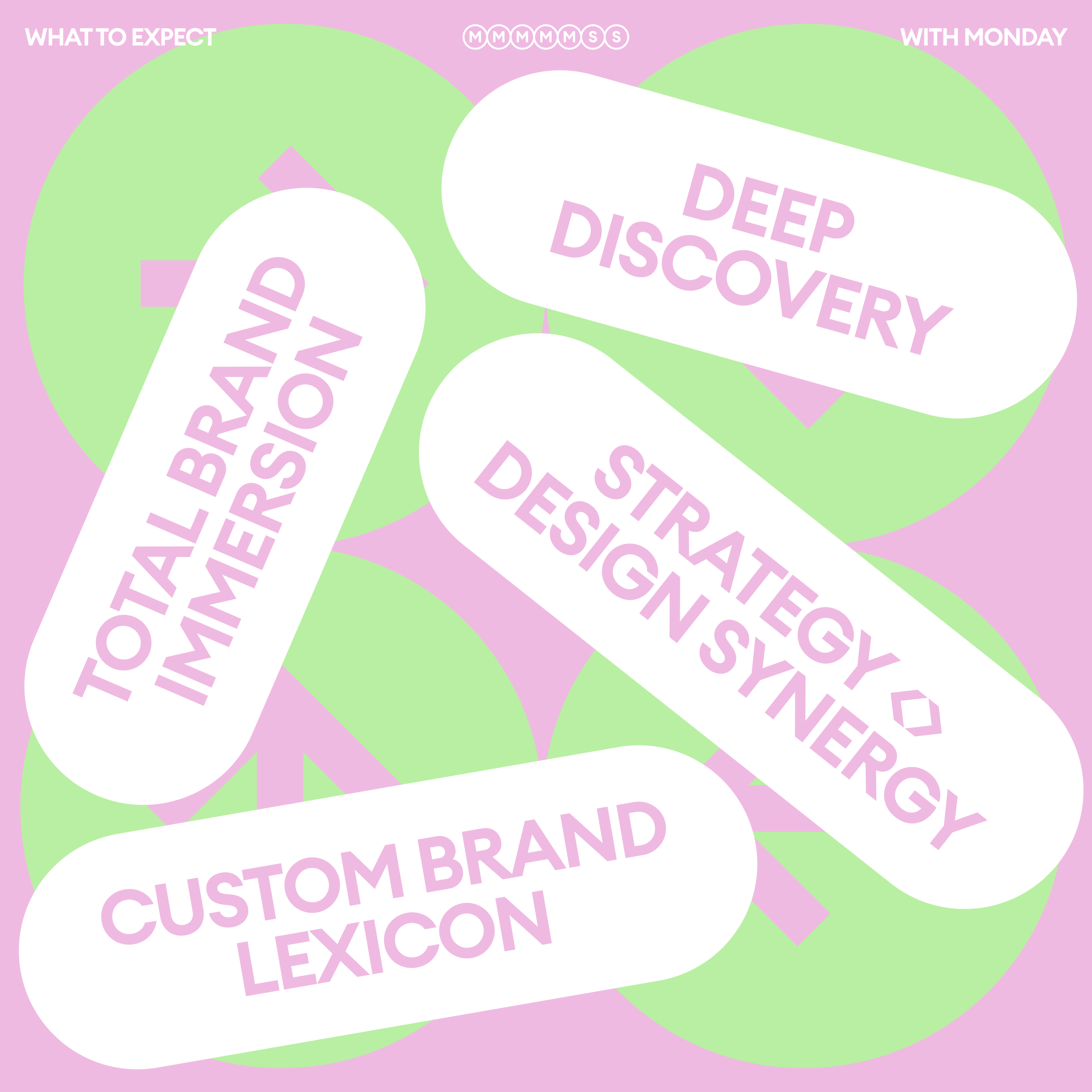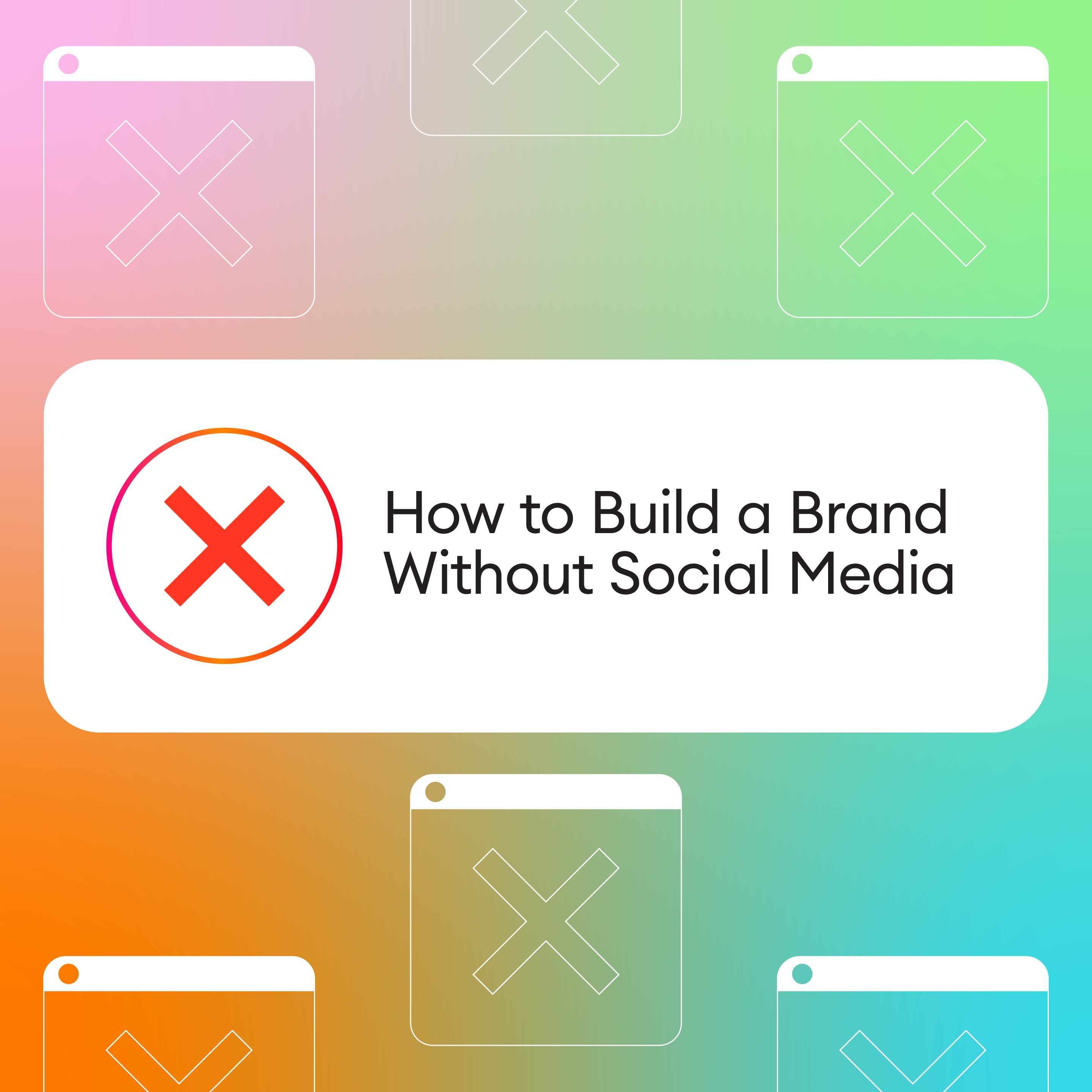Let’s talk about rebranding. For most businesses, the idea of rehauling all their assets can feel overwhelming—and it’s all too easy to bench the project until you have the time, budget and resources to see it through.
Here at Monday, we see it a little differently. We know that the brands that are building (and holding onto) equity are consistently telling a story—and they’re not waiting for the perfect time to shift gears. They’re levelling up in real time and taking an incremental approach to get ahead of competitors and remain relevant. They’re not sacrificing brand building for clicks and conversions—they’re prioritizing constant connection, and they’re playing the long game.
If you know it’s time to build—or rebuild—your brand, you don’t need to wait until you can do it all. It’s possible to start small and bite off chunks that move the needle quickly. Here are a few ways to wade into the water without breaking the bank.
1. Revisit your muse
Your ideal customer personas are the super-niche segments of your audience: the folks you consider dream customers. You know you’re doing something right when they’re most of your buyers. And when you have your muses dialled in? They should work as your brand’s ultimate compass—guiding your team in exactly what to offer, how to plan content and how to market to them with clarity.
If it’s been a minute since you reviewed your customer personas—or it’s time to clarify who they are—start by envisioning *one* person. What are their day-to-day habits? Where do they love to shop? What causes do they care about? How old are they? At Monday HQ we’re big fans of mapping our ideas out on neon post-it notes, and we highly recommend it for this exercise—you’ll see the common threads and gaps from a birds-eye view.
Here’s why this matters:
Having clearly defined audience personas is about more than generating sales—they also help your team filter out biases, align on messaging and focus on your customers’ true motivations when creating content. They also ensure your design and copy teams are on the same page and share priorities. The result? Clear, compelling messaging that draws your people in for the long haul.
2. Gather new audience research
If you’re thinking: I don’t know my customer as well as I thought… That’s okay! Sounds like it’s the perfect time for a pulse check to see where they’re at. Surveys to your email list, polls on social media and 1-1 customer interviews are great ways to collect new insights and deepen your understanding of who you’re marketing to.
When you know what your audience deeply cares about, how they’re spending their money, which competitors are on their radar, what they love most about your brand and what they don’t, so many puzzle pieces start falling into place. If sales have been low, you may find it’s because there’s a new brand on the block with a fresh marketing campaign. If social content hasn’t been resonating, it might be because your audience is more active on other platforms. Unresolved challenges suddenly have new answers, and you’ll spot new opportunities you hadn’t even considered before.
Here’s why this matters:
Instead of spinning your wheels trying to understand what’s going wrong or what your brand could be doing better, there’s no better solution than going straight to the source: your customers. Equip your team with fresh research and insights so that every decision you make is meeting your audience where they’re at right now, instead of waiting until something’s off. Consider it a preventative approach to staying ahead of your competitors—and a light lift towards refreshing your brand’s approach.
3. Evaluate your email strategy
With so many channels to reach your audience, we’re noticing that brands are trying to do it all: create compelling Reels, trending TikToks, shareable memes, the works—with no tangible data that any of it’s working or yielding clear results. Enter: email marketing. If your brand isn’t prioritizing it, now’s the time to jump in. Email continues to have the highest measurable ROI of all marketing platforms—we’re talking $36 for every $1 spent. The advantages couldn’t be clearer: not only do you own your customer data (unlike social media followers), but you can leverage it for greater impact—each email you send has an immediate and stackable return.
If you don’t have a solid email strategy in place, you’re leaving opportunities on the floor. First things first: get clear on your goals before you do anything else. Will your emails prioritize sales? Storytelling? Engagement? How often will you be reaching out to your list? If you’re looking for an easy place to start (and the fastest ROI), begin by creating irresistible opt-ins with automated welcome sequences and developing easy templates for your team. Once those are in place, you’ll be nurturing new customers on repeat and have more room to flex your creativity in other areas.
Here’s why this matters:
The numbers don’t lie: according to the research, 74% of new subscribers actually expect to receive welcome emails from brands, and they’re most likely to respond or take an action within the first 48 hours. That means with the right automations in place and a focus on testing new campaigns, email could become a major contributor to your bottom line. It also allows you to roll out fresh branding over time, introduce new products and A/B test new messaging before you solidify it. Most importantly? You’re guaranteed to get eyeballs on your content—instead of dissolving into an algorithm.
4. Come back to your purpose
At the heart of all we do for clients, the number one thing is articulate a powerful why. Over time, it’s easy to get away from the reason your brand was built—that purpose can get muddled as you scale. It might even evolve as you reach new audiences or start to innovate. Our two cents? Just don’t forget about it. A strong brand purpose is key for everyone in your business—it’s what each team member needs to understand and internalize so you can continue growing intentionally.
Here’s why this matters:
Even if your brand doesn’t need a visual refresh, there’s so much value in rearticulating your purpose in ownable language for your team *and* your audience. When your employees know why they’re waking up each day and their role in your vision, they feel more connected to it. And when your audience gets the message, too? That’s what separates you from the pack and secures greater customer loyalty. If your brand is missing that spark that gets everyone on the same page, renewing your purpose can be the very thing to reignite it from the inside out.
5. Evolve your brand voice
Marketing isn’t just about what you say; it’s how you say it. Your verbal identity is just as important as your visual one, and there’s nothing more distinct than personality. It’s the hardest thing to imitate, which means it can be your brand’s superpower if it’s done well. Take Wondery Outdoors for example. After working together to refine their brand voice, their down-to-earth vibe is woven into everything they write—and their audience has come to recognize them for their playful and inviting take on getting outside.
If your voice is due for an upgrade, the easiest way to press refresh is imagining how someone would describe your brand after meeting them at a party. What would they say about you? What made you stand out? Why? When your voice is clear and compelling, your copy follows suit. Without having to invest in tons of new brand elements, evolving your voice can be an easy way to make your brand more memorable and real.
Here’s why this matters:
Just like visuals, your brand voice defines you and creates a cohesive image of who your brand is. When you infuse more personality into your voice, you’re creating a consistent experience for your audience—one that leads to increased familiarity, credibility and trust.
6. Refresh your visual design system
Want a visual refresh without changing your logo? No biggie. Our favourite way to reignite an existing visual brand is to simply modernize its design elements. Think: fresh shapes, lines, textures, and colours. There’s a whole world of supporting graphic elements that can breathe new life into your brand without taking away what already makes it recognizable.
Here’s why this matters:
We start to consider a rebranding strategy when we want to revive interest in the brand and align with where we’re going—not where we’ve been. And when your visual identity feels fresh and energized? That’s exactly what happens: people pay attention. You’ll cast a wider net to attract new customers, regenerate interest from your existing audience, and bring fresh energy to your next campaign.
Want to hit the ground running with the right strategy for your brand? We’ve got you.
For inspiration: Tune into our new podcast My Best Campaign, or check out our recent work here.
To bring in a top-tier team for a low-lift refresh: Reach out here.







